Good Night everyone for all of our friends who are at Blurtter and have been joining Blurtter for a long time, hopefully we are always healthy and can always carry out activities as usual. So on this occasion I want to write a little bit about Cordilura | Photography | Macro hopefully later it can become a memory for myself, and for other friends who are already married, don't forget to also give directions and input if later in my writing there are still words- words that are not polite, therefore I apologize once again.
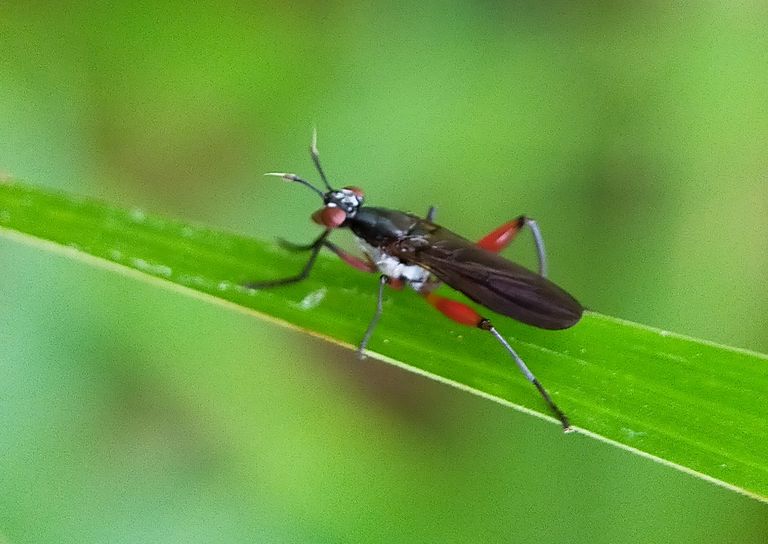
Cordilura Fallén, 1810 is the largest genus withinthe family Scathophagidae and consists of 91 speciesdistributed in the Northern Hemisphere: 46 species areknown in Palaearctic [Iwasa, 2020] and 36 in Nearctic, with 7 species with Holarcticdistribution; 2 species are recorded in Oriental Region[Ozerov, Krivosheina, 2012a; 2013].The fauna of Russia includes 37 species [Loew,1864; Becker, 1894; Hackman, 1956; Gorodkov,1970, 1974, 1986; Elberg, 1972; Ozerov, 2007b,2009; Šifner, 2008; Ozerov, Krivosheina, 2012b,2015, 2017].Faunistic reviews of some districts of Russia arepublished for the Kamchatka [Hendel, 1930; Ozerov,2007a], Volga Region [Ovchinnikov, 2004], Karelia[Humala, Polevoi, 2009], Yakutia [Bagachanova et al.,2016] and Russian Far East [Ozerov, Krivosheina,2014], but no general work has been fulfilled.Almost all species of Cordilura whose habits areknown are primary borers in culms of Carex and Scir-pus spp. (Cyperaceae) [Neff, Wallace, 1969; Wallace,Neff, 1971]. Besides, larvae of Cordilura have beenfound in stems of Glyceria (Gramineae) and Juncus(Juncaceae) [Ferrar, 1987].Adults of Cordilura species are often collected atlocations where these plants grow: in marshy plots, atbanks of lakes covered with Carex spp., along springbanks and in other mesophytic habitats.Life cycles, mature larvae, and puparia of 13 Ne-arctic species of Cordilura are described [Neff, Wal-lace, 1969; Wallace, Neff, 1971]. Also 3rd stage larvaand pupa of Holarctic species Cordilura pudica Mei-gen, 1826 is described [Wallace, Neff, 1971]
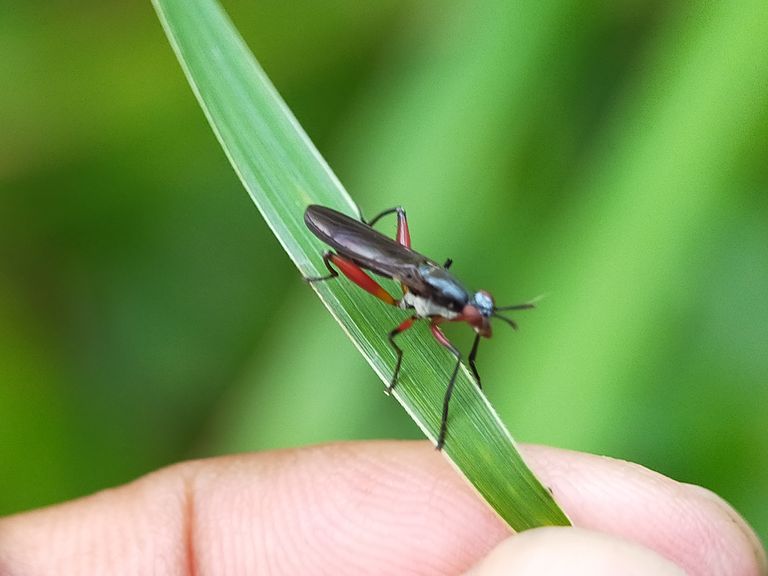
The specimens examined for this study are deposit-ed in the Zoological Museum, Moscow State Universi-ty, Russia and Zoological Institute of Rus-sian Academy of Sciences, St. Petersburg, Russia(ZISP). We also studied some material from the Insti-tute of Systematics and Ecology of Animals, RussianAcademy of Sciences, Siberian Branch, Novosibirsk,Russia (ISEA) and from Institute of Biology and SoilSciences, Russian Academy of Sciences, Far EasternBranch, Vladivostok, Russia (IBSS).The majority of original Russian geographical namesare given in transliteration, but names of some largegeographical regions (e.g. Altai (=Altai Krai + AltaiRepublic), Krasnoyarsk Krai, Primorsky Krai, SakhaRepublic (=Yakutia), Zabaykalsky Krai) follow theseindicated in Google Earth software.The data on distributions are cited as follows: Rus-sia is in the first place, other countries of the world aregiven after a m-dash [—]. More detailed data on thedistributions of species in Europe may be found in thework by Šifner [2008], and in North America in thework by Vockeroth [1965].The terminology used in the generic and speciesdescriptions follows McAlpine [1981]), Cumming &Wood [2009], and Stuckenberg [1999].Taxonomic resultsCordilura Fallén, 1810Cordilura Fallén, 1810: 15. Gender: feminine. Type-species:Musca pubera Linnaeus, 1758 sensu Fallén, 1810 [misidentifica-tion, = Cordylura rufipes Meigen, 1826], by monotypy.Phrosia Robineau-Desvoidy, 1830: 668. Gender: feminine.Type-species: Phrosia scirpi Robineau-Desvoidy, 1830, by mono-typy [= Ocyptera albilabris Fabricius, 1805).Mosina Robineau-Desvoidy, 1830: 670. Gender: feminine.Type-species: Musca pubera Linnaeus, 1758, by designation ofWestwood, 1840.Scoliaphleps Becker, 1894: 98. Gender: feminine. Type-spe-cies: Cordylura ustulata Zetterstedt, 1838, by original designa-tion.
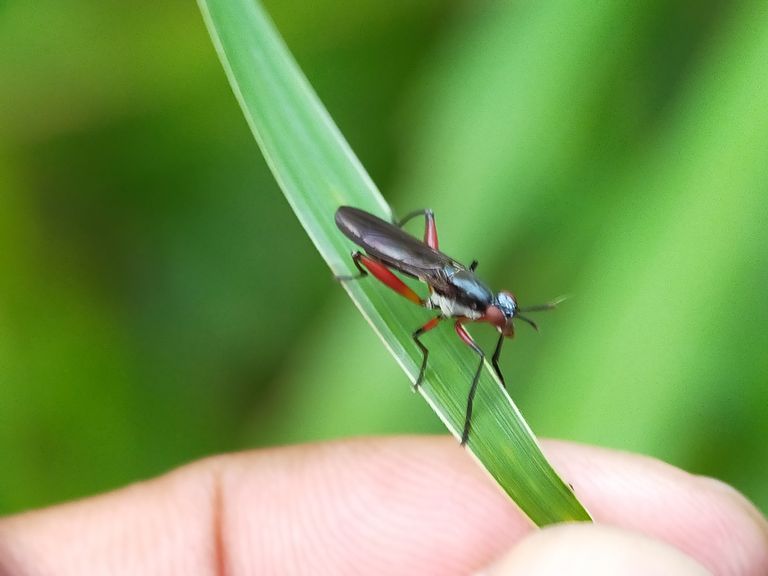
Cordilurina James, 1955: 96 [as subgenus of Cordilura]. Gen-der: feminine. Type-species: Cordylura vittipes Loew, by originaldesignation [= Cordylura fuscipes Zetterstedt, 1838].Cordylura: unjustified emend.Adult Cordilura can be distinguished from the othergenera of Scathophagidae by the following combina-tion of characters: 1) katepisternum with one stong setain posterodorsal corner, 2) palpus with strong apical(subapical) seta about as long as or longer than palpus,3) fore femur and fore tibia without ventral rows oflong spinous setae, 4) proepisternum is covered withhairs at middle or on anterior part.Cordilura species are slender, small to medium-sized flies (about 3.5–10.5 mm long); color various,but usually is black (Figs 1, 2).Head subspherical (Fig. 7). Eyes moderately large,dichoptic in both sexes. Frontal vitta and fronto-orbi-tal plate distinct. 1–3 orbitals, 2–5 frontals, 1 ocellar,1 inner vertical, 1 outer vertical, 1 small postocellarsetae present; 1 pair of strong vibrissae and 1–2 pairsof subvibrissae present. Postpedicel rounded apically,1.5–3 times as long as wide, with arista nearly bare toplumose (Figs 3–7). Palpus slender, slightly broad-ened towards apex, with a long outstanding seta api-cally (Figs 8, 9).
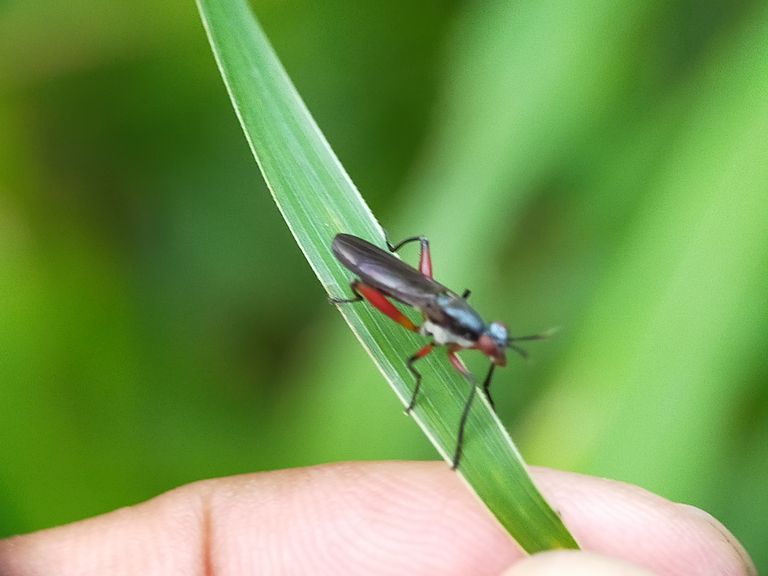
Thorax as in most Calyptrata. Scutum with follow-ing setae: acrostichal usually setulose in two rows orabsent, dorsocentrals 3+3 (including scapular seta), in-tra-alars (0–1)+(0–2), supra-alars (0–1)+(1–2), postpro-notals 1–2, 2 notopleurals, 2 postalars. Proepisternumcovered with fine hairs and usually with 1–2 setae nearventral margin. Proepimeron with 0–1 seta ventral tospiracle. Anepisternum with fine hairs in posterior halfand 2–4 well-developed setae near posterior margin.Katepisternum with one long black seta in posterodorsalcorner, ventrally and posteriorly with hairs. Anepimeronbare. Postmetacoxal bridge absent. Scutellum with oneor two pairs of strong setae: with a pair of strong discaland a pair of strong apical setae (Fig. 13) or with a pairof strong discal setae and pair of apical setulae (Fig. 12).Legs long and slender. Fore femur with a row ofanterodorsal setae, with a row of thin and usually longventral setae, sometimes with fine long hairs on posteri-or and posteroventral surfaces. Fore tibia with 1–2 dor-sal/posterodorsal, 0–2 posterior, 0–2 anterodorsal, 2 pos-teroventral setae, and with a ring of apical setae. Midfemur usually with rows of anterior and anterodorsalsetae and with 0–1 anterior apical, 0–2 posterior apicaland 0–1 posterodorsal apical setae. Mid tibia with 1–3anterodorsal, 1–2 posterodorsal, 1–2 anteroventral, 0–2posterior or posteroventral setae, and with a ring ofapicals. Hind femur with a row of anterodorsal andseveral anteroventral setae, 0–2 dorsal setae in apicalhalf, and 0–2 posterior apical setae. Hind tibia with 2–3anterodorsal, 2–4 posterodorsal, 0–2 anterior or anter-oventral, 1 dorsal preapical, 1 anterodorsal preapical, 1posterodorsal preapical, 1 anteroventral apical, 0–1 pos-teroventral apical and 0–1 ventral apical setae. Vocke-roth [1987: 1090] considers species that lack posterov-entral apical seta of hind tibia in the separate genusBucephalina Malloch, 1919. We found another differ-ence between Bucephalina and Cordilura in the struc-ture of ovipositor (see below). Nevertheless we considerin this work all Russian species hind tibia of which lackposteroventral apical seta (C. amurensis Ozerov, 2007,C. krocha Ozerov, 2007, C. nartshukae Ozerov etKrivosheina, 2015, C. nubilosa sp.n., C. sifneri Ozerov,2007, C. tartariana Ozerov, 2007) in the genus Cordilu-ra. Molecular analysis based on DNA sequences forthese genera may solve this issue in future
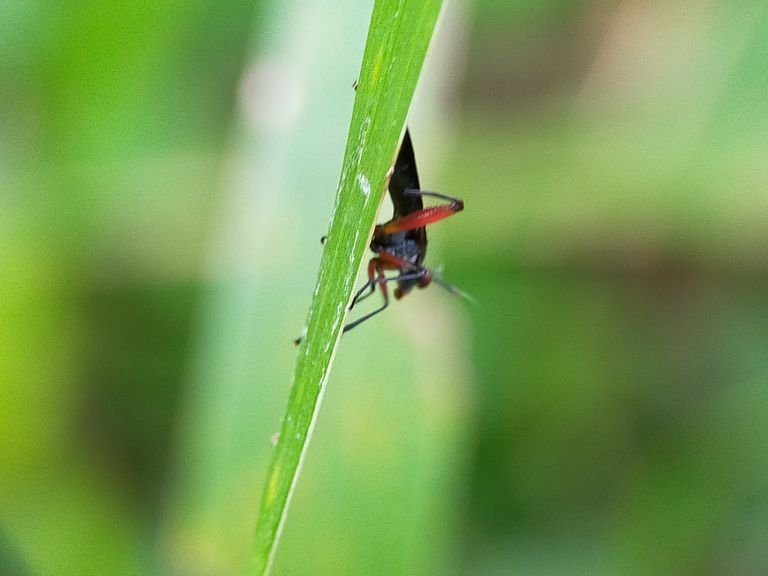
Wing well-developed, clear or tinged with brown-ish, rarely darkened apically (Fig. 20), rare with darkspots (Fig. 18). Vein R1 setulose on apical third ofdorsal surface (Fig. 19) or bare.Abdomen long, subcylindrical. Usually syntergite1+2 with 2–3 lateral discal and 2–4 lateral marginalsetae; tergites 3–6 each with a row of marginal setae.Male sternite 4 triangular, rectangular or trapezoid, aswide as long or wider than long (Figs 14–17). Sternite5 with well developed lateral lobes from narrow (e.g.,Figs 66, 93) to wide (e.g., Figs 72, 131). Surstyli sym-metrical, simple (e.g., Figs 37, 102) or bifurcate (e.g.,Figs 25, 58); cerci fused apically or medially formingcercal plate.Ovipositor (Figs 21–23) long and compressed, withlarge membranous areas between segments. Tergite 7sclerotized laterally and membranous dorsally. Sternite 6well sclerotized, with apodeme of various lenght basallyfused to sternite (Figs 22, 23) or without apodeme in mostspecies. Sternite 7 poorly sclerotized medially, with longapodeme not fused to sternite 7. In species C. krocha, C.nartshukae, C. amurensis, C. sifneri, C. tartariana ster-nite 7 without apodeme. Tergite 8 in form of heavilysclerotized sclerite with deep membranous dorsal emar-gination in distal part. Sternite 8 divided medially into 2small, heavily sclerotized spatulate sclerites. Proctigersituated distally and represented by small entire epi-proct, 1 pair of small cerci, and hypoproct.
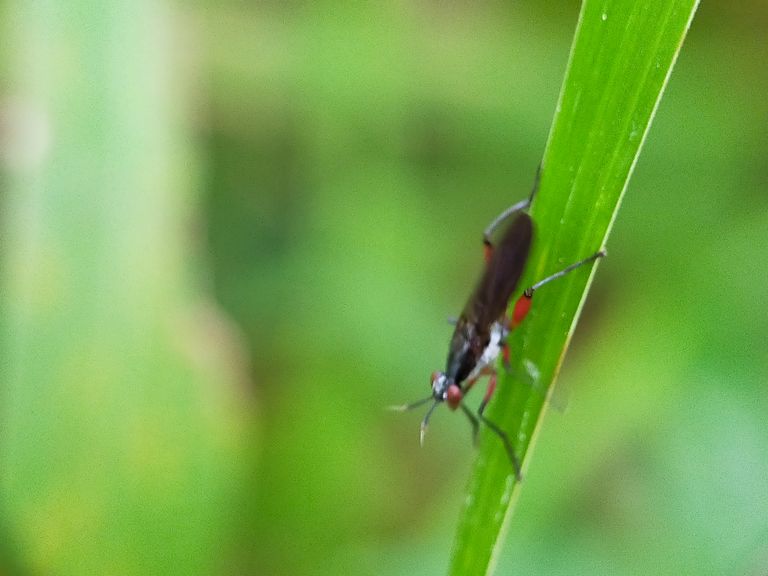
Postcranium yellow completely or yellow inlower part and black in upper half or third. 2 orbitaland 2–4 frontal setae present. Antenna pale yellow.Postpedicel approximately 2 times as long as wide.Arista plumose, longest hairs approximately as long aswidth of postpedicel. Palpus yellow. Thorax yellow inground colour; scutum varies in colour from shiny blackcompletely to almost yellow completely, usually yel-low with two blackish stripes along dorsocentral lines.Acrostichals setulose in two rows, dorsocentrals 3+3(including scapular seta), intra-alars (0–1)+(0–2), su-pra-alars 1+2, 2 postpronotals. Scutellum with a pair ofstrong discal setae only; apical scutellar setae as setu-lae or absent (Fig. 12). Legs shining, usually yellowcompletely, sometimes mid and hind femora slightlydarkened. Wing tinged with brownish; veins blackish.Vein R1 setulose on apical third of dorsal surface.Abdomen from yellow to black, shining or subshining.Male sternite 4 rectangular, longer than wide. Malesternite 5, epandrium and surstyli as in Figs 33–35.Female ovipositor as in Figs 21–23.DISTRIBUTION. Russia: Adygea, Altai, Arkhan-gelsk Oblast, Buryatia, Chelyabinsk Oblast, Crimea,Dagestan, Irkutsk Oblast, Karelia, Kemerovo Oblast,Krasnodar Krai, Krasnoyarsk Krai, Leningrad Oblast,Mordovia, Moscow Oblast, Murmansk Oblast, Nizhe-gorod Oblast, North Ossetia – Alania, Novgorod Ob-last, Novosibirsk Oblast, Primorsky Krai, Rostov Ob-last, Ryazan’ Oblast, Sakhalin Oblast, Tatarstan, TomskOblast, Tyumen’ Oblast, Tuva, Yakutia, ZabaykalskyKrai. — Europe, including Belarus (first record), Ar-menia (first record), Georgia (first record), Iran [Kha-ghaninia, Gharajedaghi, 2014: 391], Mongolia, Japan[Iwasa, 2020: 472].

DIAGNOSTIC DESCRIPTION. Male. Female.Body-length 4.6–5.8 mm. Head. Frontal vitta black ordark brown, frequently reddish yellow apically, withwhitish reflection; fronto-orbital plate black, greyishdusted. Face and parafacial yellowish with whitish re-flection. Gena brownish. Postcranium black, grey dust-ed. 3 orbital and 2–3 frontal setae present. Antennablack. Postpedicel approximately 2 times as long aswide. Arista pubescent, the longest hairs approximate-ly equal to 1/3–1/2 width of postpedicel. Palpus black.Thorax black, grey dusted. Acrostichals setulose intwo rows, dorsocentrals 3+3 (including small scapularseta), intra-alars 1+2, supra-alars 1+2, 2 postpronotals.Scutellum with a pair of strong discal and a pair ofstrong apical setae. Legs greyish dusted. Fore coxa black;femora, tibiae and tarsi of all legs black. Wing tingedwith brownish; veins blackish. Vein R1 setulose on api-cal third of dorsal surface. Abdomen black, grey dusted.Male sternite 4 rectangular, wider than long. Male ster-nite 5, epandrium and surstyli as in Figs 39–41.DISTRIBUTION. Russia: Arkhangelsk Oblast, Chu-kotka, Kamchatka Krai, Komi, Krasnoyarsk Krai, Mor-dovia, Moscow Oblast, Murmansk Oblast, LeningradOblast, Novosibirsk Oblast, Sakhalin Oblast, Tyumen’Oblast, Yakutia. — Europe, North America.Cordilura bicoloripes Ozerov, 1997Figs 42–44.bicoloripes Ozerov, 1997: 1424 (Cordilura). Type-locality: 40km SE of Ussuriysk (Russia, Primorsky Krai).REMARK. This species was described and record-ed in Russia from Primorsky Krai only [Ozerov, 1997:1424; Ozerov, Krivosheina, 2014: 207].MATERIAL EXAMINED.
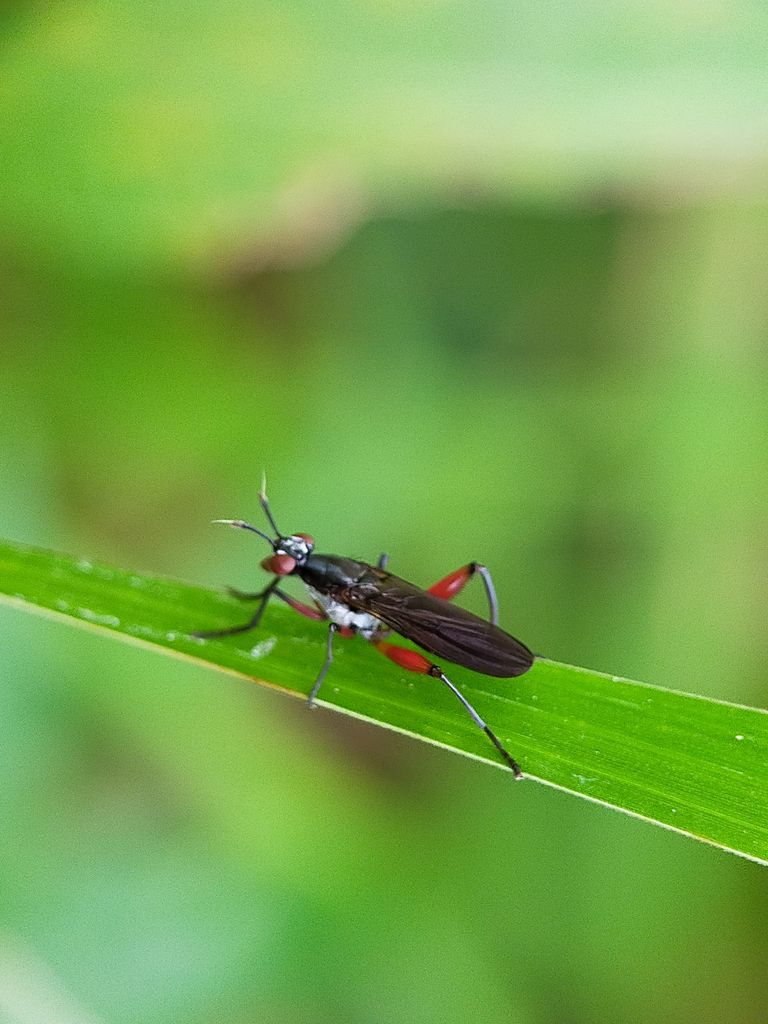
Female.Body-length 6.0–9.2 mm. Head. Frontal vitta and fron-to-orbital plate black, with whitish reflection. Face andparafacial yellow with whitish reflection in male andblack with whitish reflection in female. Gena black inboth sexes. Postcranium black, grey dusted. 2 orbitaland 3–4 frontal setae present. Antenna brownish orblackish. Postpedicel approximately 2.5 times as long aswide. Arista pubescent, the longest hairs approximatelyequal to 1/3–1/2 width of postpedicel. Palpus yellow.Thorax black, delicately grey dusted, but scutum shin-ing. Acrostichals absent, dorsocentrals 2+3 (includingsmall scapular seta), intra-alars absent, supra-alars 0+2,postpronotals absent. Scutellum with a pair of strongdiscal setae only; apical scutellar setae absent. Legsshining. Femora of all legs bicolor: black in apical partand yellow in basal half or third; tibiae and tarsomeres1–3 of all legs yellow, tarsomeres 4 and 5 of all legsbrown or black. Wing tinged with brownish, darkened inapical third; veins yellowish. Vein R1 bare on apicalthird of dorsal surface. Abdomen black, shining. Malesternite 4 rectangular, slightly longer than wide. Malesternite 5, epandrium and surstyli as in Figs 42–44.DISTRIBUTION. Russia: Primorsky Krai
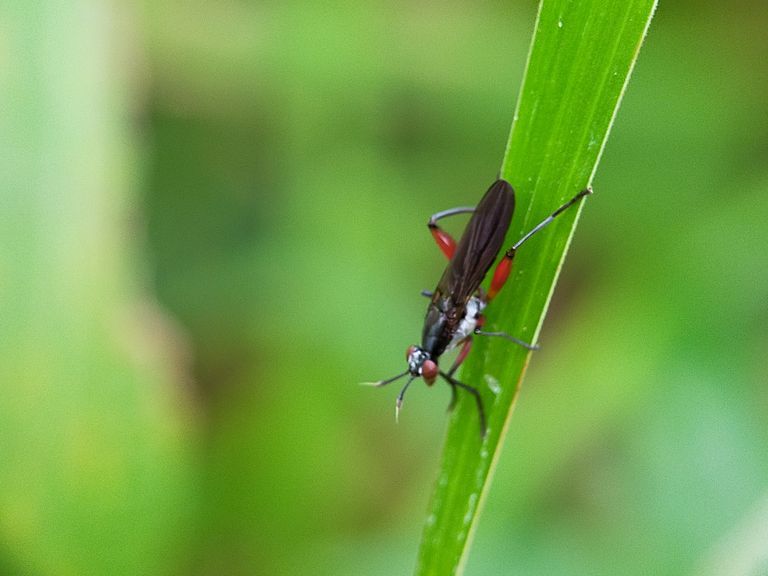
DIAGNOSTIC DESCRIPTION. Male. Female.Body-length 4.2–6.5 mm. Head. Frontal vitta yellow,matt; fronto-orbital plate yellow or black, delicatelygreyish dusted. Face yellowish, with whitish reflection.Parafacial and gena yellow. Postcranium yellow com-pletely or black in upper part and yellow in lower thirdor quarter. 3 orbital and 2–3 frontal setae present.Scapus and pedicel yellow; postpedicel blackish, butyellowish basally, approximately 1.5 times as long aswide. Arista pubescent, the longest hairs approximate-ly equal to 1/3–1/2 width of postpedicel. Palpus yel-low. Thorax from yellowish to black, delicately greydusted. Acrostichals setulose in two rows, dorsocen-trals 3+3 (including scapular seta), intra-alars (0–1)+(1–2), supra-alars 1+2, 1–2 postpronotals. Scutellum witha pair of strong discal setae only; apical scutellar setaeas setulae or absent. Legs shining, yellow completely,sometimes femora darkened dorsally. Wing tinged withbrownish; veins blackish. Vein R1 bare on apical thirdof dorsal surface. Abdomen brownish or black, shiningor delicately greyish dusted. Male sternite 4 rectangu-lar, longer than wide. Male sternite 5, epandrium andsurstyli as in Figs 51–53.Frontal vitta brownish, with whitishreflection; fronto-orbital plate black. Face and parafa-cial whitish. Gena yellow, whitish dusted. Postcraniumblack, subshining. 2 orbital and 2–3 frontal setae present.Antenna black. Postpedicel approximately 1.5 times aslong as wide. Arista black, pubescent in basal quarter(the longest hairs not longer than greatest diameter ofarista) and the rest bare. Palpus blackish. Thorax black,scutum subshining, thoracic sclerites greyish dusted.Acrostichals setulose in two irregular rows, dorsocen-trals 3+3 (including short scapular seta), intra-alarsabsent, supra-alars 1+2, 2 postpronotals. Scutellum witha pair of strong discal and a pair of strong apical setae.Legs. Ground-colour black; all coxae and femora black,mid and hind tibiae blackish; fore tibia and all tarsiyellow. Wing tinged with brownish; veins brown. VeinR1 bare on dorsal surface. Abdomen black, thinly grey-ish dusted. Male sternite 4 approximately 2 times aswide as long. Male sternite 5, epandrium and surstylias in Figs 54–56
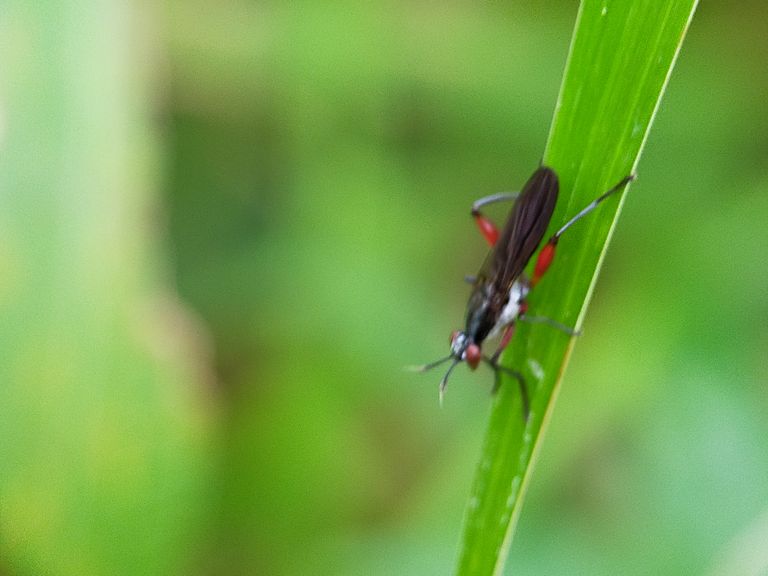




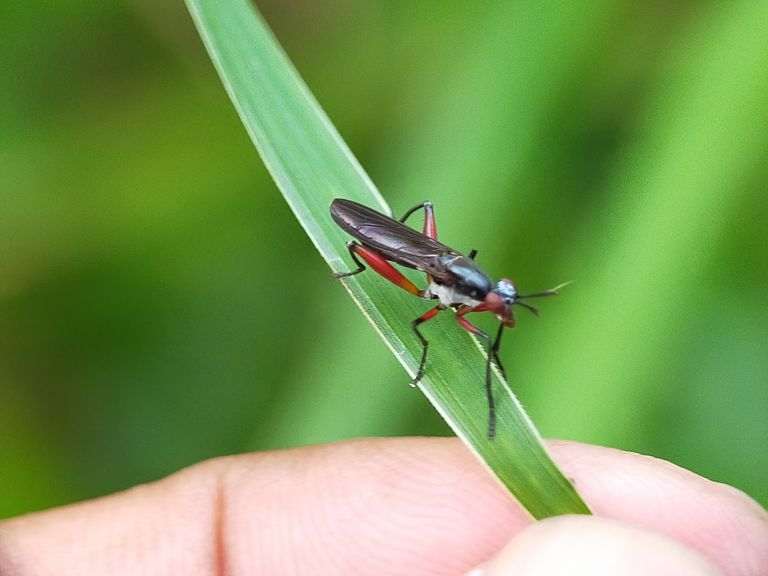
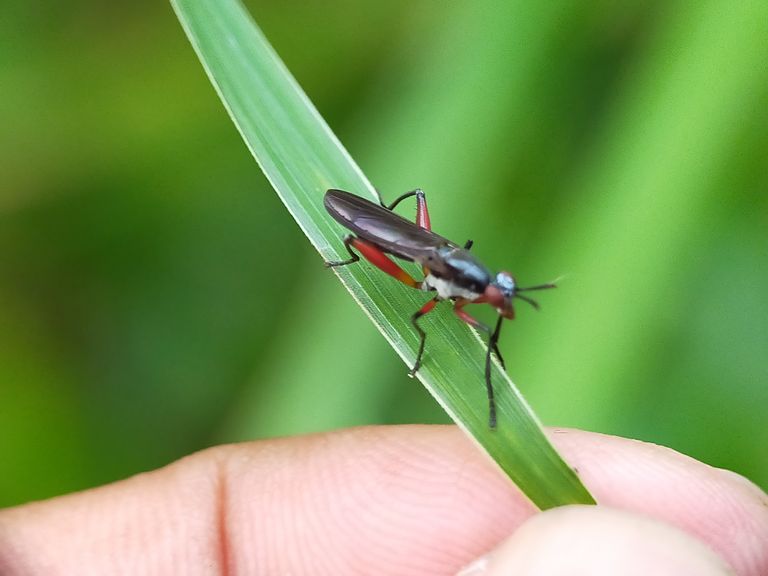
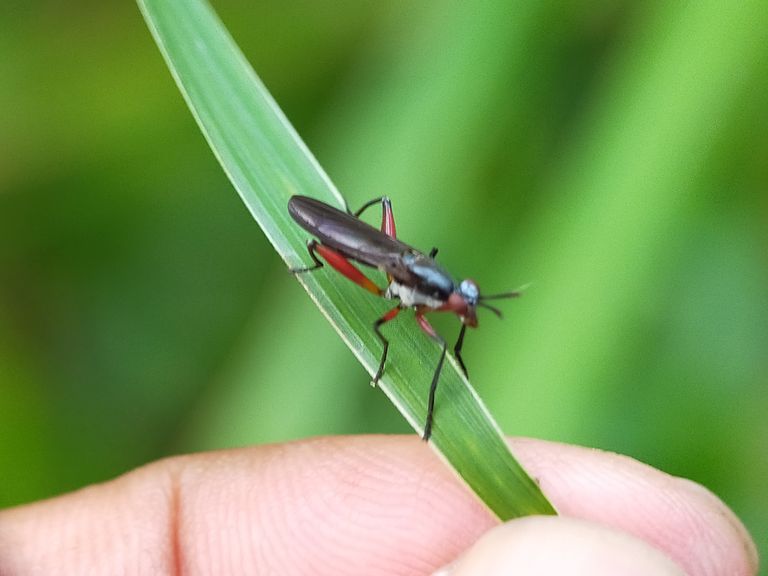
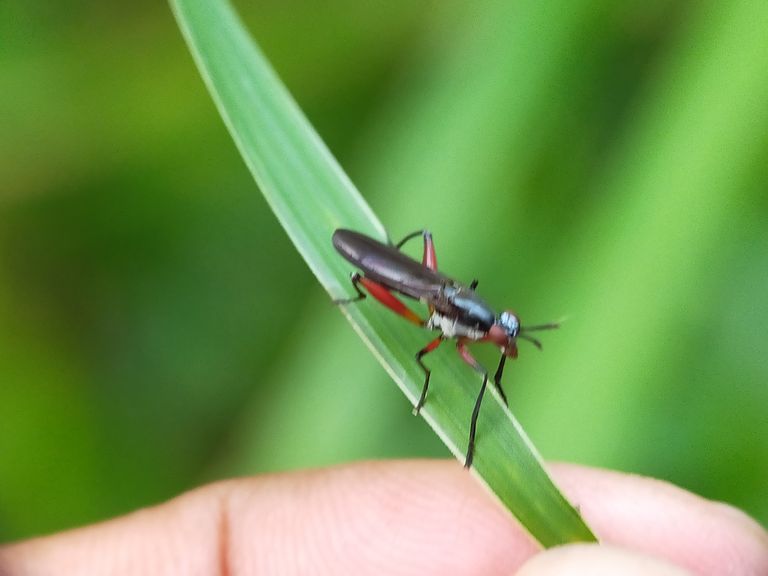
This is all I can say more and less I apologize, hopefully it will be useful for me, and hopefully it will be useful for all readers in general, thank you for visiting my blog, don't forget to follow and vote for my posts. , and one more thing, don't forget to share this post with other friends.
Thank you for visiting my blog, don't forget to follow and vote for me to post, and others don't forget to share this post with other friends.
Greetings to all on Blurtter...
** Your post has been upvoted (3.37 %) **
Curation Trail is Open!
Join Trail Here
Delegate more BP for bigger Upvote + Daily BLURT 😉
Delegate BP Here
Upvote
https://blurtblock.herokuapp.com/blurt/upvote
Thank you 🙂 @tomoyan